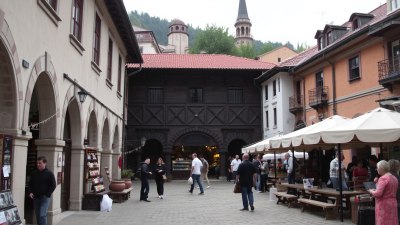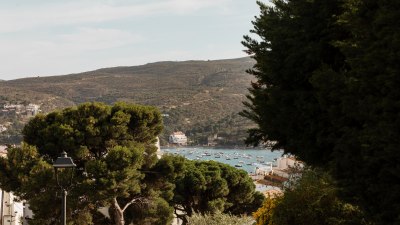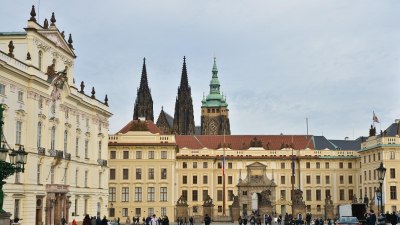Recording the Echoes of History in Sarajevo
Explore the rich history of Sarajevo, its cultural significance, and how it preserves echoes of the past.

Sarajevo, the capital of Bosnia and Herzegovina, is a city steeped in a complex history that has shaped its identity as a melting pot of cultures, religions, and traditions. This unique blend can be traced back to its founding in the Ottoman era, through the Austro-Hungarian period, and into the modern-day as a symbol of resilience and hope. Understanding Sarajevo means delving deep into its past and recognizing the echoes of history that reverberate throughout its streets, buildings, and landscapes.
The city is renowned for its significant historical and cultural landmarks, which offer a glimpse into the diverse influences that have shaped it over the centuries. For instance, the Baščaršija bazaar showcases traditional Ottoman architecture while simultaneously serving as a bustling marketplace where visitors can enjoy local delicacies and crafts. This area encapsulates the essence of Sarajevo, where the East meets the West, reflected in its food, music, and even in its linguistic tapestry.
The Ottoman Legacy
Sarajevo's Ottoman heritage is an essential part of its identity. Established in the 15th century, it became a vital administrative and trade center within the empire. The Gazi Husrev-beg Mosque, one of the most significant Islamic structures in the Balkans, exemplifies this era's architectural brilliance. Its intricate designs and tranquil courtyard provide a serene environment for reflection on the past. The mosque, along with several other Ottoman-era buildings, tells the story of the city’s vibrant religious life during this period.
The influence of the Ottoman Empire can also be seen in the city's culinary landscape. Dishes like ćevapi (grilled minced meat) and baklava (sweet pastry) are not just sustenance; they are cultural symbols that evoke memories of family gatherings and traditional recipes handed down through generations. As visitors sample these foods, they partake in an age-old culinary tradition that binds the past to the present.
Austro-Hungarian Influence
The late 19th and early 20th centuries marked a significant transformation in Sarajevo with the arrival of Austro-Hungarian rule. This period introduced European architectural styles, and a new urban planning philosophy aimed at modernizing the city. Landmarks such as the Sarajevo City Hall (Vijećnica) stand as testimonies of this era, showcasing a blend of Moorish revival and Jugendstil architecture. After years of neglect, the restoration of the building has turned it into a cultural center, symbolizing the resilience of the city and its commitment to preserving its heritage.
The era also brought an expansion of educational institutions and the establishment of cultural organizations that aimed to foster a sense of national identity among the Slavic peoples of the region. This cultural awakening ultimately laid the groundwork for the nationalist movements that would shape the region's future.
The Assassination That Changed the World
No discussion of Sarajevo’s history would be complete without mentioning the assassination of Archduke Franz Ferdinand in 1914. This event acted as the catalyst for World War I, and its location in Sarajevo marked the city as a focal point in international history. The Latin Bridge, where the assassination took place, now serves as a significant historical site, with exhibits that explore the circumstances leading to the event and its repercussions on a global scale. Visitors can reflect on the consequences of political actions and the fragility of peace.
Legacy of War and Resilience
Sarajevo's history is not without its tragedies, and the brutal conflict during the 1990s has left an indelible mark on the city. The Siege of Sarajevo lasted almost four years, resulting in immense suffering, loss, and displacement. Yet, from this darkness emerged the spirit of resilience. The UNESCO-listed Sarajevo Tunnel is a poignant reminder of the resourcefulness of its people during the war. The tunnel, which connected the besieged city with the outside world, provided not only a lifeline for food and supplies but also became a symbol of hope and defiance against adversity.
The aftermath of the war has left Sarajevo with a complex narrative—one of tragedy, loss, and eventual rebuilding. Memorials such as the Gallery 11/07/95, dedicated to the victims of the Srebrenica massacre, serve as reminders of the past while fostering dialogue about peace and healing. Sarajevo's residents have made incredible strides toward reconciliation, as they acknowledge their past while aiming for a brighter future together.
Modern Cultural Renaissance
Today, Sarajevo stands at the crossroads of tradition and modernity, where historical preservation coexists with contemporary cultural expression. Events like the Sarajevo Film Festival have positioned the city as a hub for cinematic art, attracting filmmakers and audiences from around the globe. This festival not only showcases local talent but also highlights the significance of storytelling in reconciling and shaping a collective memory.
The city's arts and music scene has also flourished in recent years, with numerous galleries, theaters, and live music venues offering diverse programming that reflects the unique cultural identity of Sarajevo. The annual Sarajevo Winter Festival brings together artists from various disciplines to celebrate creativity and foster intercultural dialogue, emphasizing the importance of cultural exchange in healing and growth.
Connecting with History
For those who visit Sarajevo, engaging with its history is an integral part of the experience. Walking tours led by local guides provide personal narratives that bring the stories of the city to life, offering visitors an authentic connection to the past. Through the exploration of historical sites, museums, and local stories, one can experience the echoes of history echoing in the heart of Sarajevo.
In conclusion, Sarajevo is a city where the echoes of history resonate powerfully, reminding its inhabitants and visitors alike of the past's complexities and the importance of preserving cultural heritage. As it continues to evolve in the face of modern challenges, Sarajevo remains committed to remembering its history while looking towards a more inclusive and hopeful future. By recording and reflecting on its diverse narratives, the city honors its past and inspires future generations.











